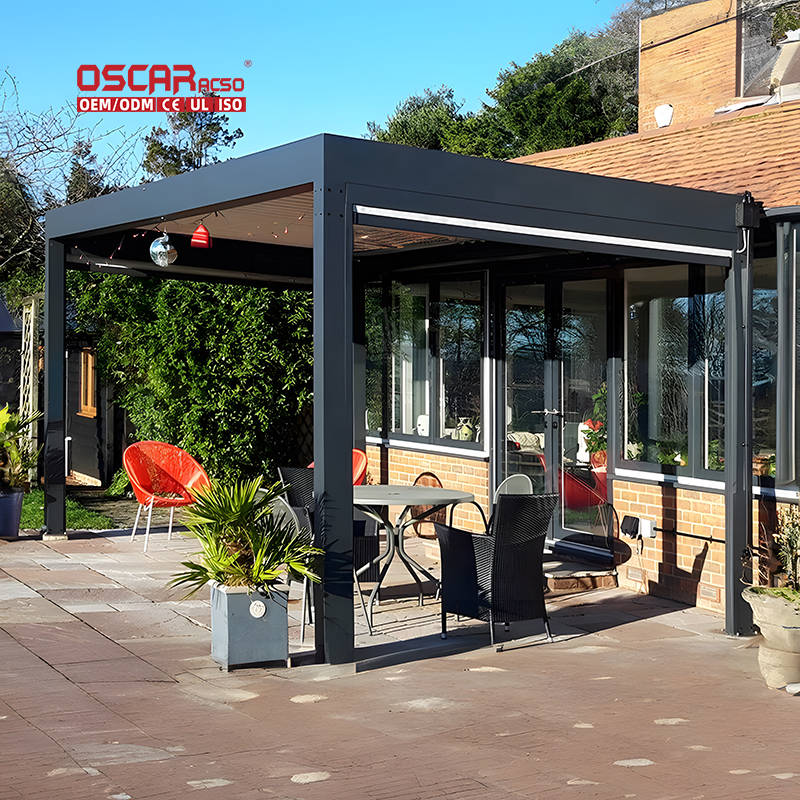Pergola Origins, Tracing the Ancient Roots of Garden Elegance
🌿 What Exactly is a Pergola?A pergola is an outdoor structure consisting of vertical posts that support an open roof, ty...

🌿 What Exactly is a 涼亭?
A pergola is an outdoor structure consisting of vertical posts that support an open roof, typically made of cross-beams or lattice. This design provides partial shade and defines a space while allowing air to circulate freely. They are often used in gardens, over patios, or as walkways, and can be adorned with climbing plants like vines, roses, or wisteria for added beauty and shade.
The key to a pergola’s appeal lies in its blend of function and form. It creates a comfortable, defined outdoor area that feels like an extension of your home. Whether used for dining, relaxing, or simply enjoying the garden, a pergola adds a touch of elegance and structure to any outdoor setting.
🏛️ Tracing the Ancient Roots
The concept of the pergola has deep historical roots. While the exact origin is debated, structures similar to pergolas have been found in ancient Egyptian gardens around 1400 BC, where they provided shade and support for vines.
.jpg)
The term “pergola” itself is believed to have Italian origins. It’s thought to derive from the Latin word pergula, which referred to a projecting eave or a porch. There’s also a theory connecting the name to the Italian town of Pergola, a historic settlement in the Marche region known for its architectural heritage and as the home of the gilded “Bronzi Dorati” statues.
The ancient Romans were masters of incorporating pergola-like structures into their villas and gardens. They used them to create shaded walkways (xysti) and to support grapevines, blending practicality with the pursuit of leisure and beauty in their renowned gardens.
🌍 Evolution Through the Ages
The pergola’s journey didn’t end with the Romans. Its form and function evolved as it spread across different cultures and eras.
During the Renaissance, Italian gardens embraced the pergola with enthusiasm. They became central features in the lavish gardens of wealthy families, often constructed from stone and lush, climbing vegetation. This era solidified the pergola’s status as a symbol of luxury and refined landscape design.
In the Victorian era, pergolas gained popularity in England and North America. They were seen as a way to bring a touch of classical romance and order to gardens, perfectly complementing the style of the time.
The 20th century saw another surge in the pergola’s popularity. The Arts and Crafts movement celebrated handcrafted elements and a connection to nature, making the pergola a perfect fit. Today, pergolas are more versatile than ever. Modern materials like vinyl, aluminum, and fiberglass offer durability and low maintenance, while motorized louvers and integrated lighting have added new levels of functionality and comfort.

🌟 Pergola vs. Other Structures
It’s easy to confuse pergolas with other backyard structures, but key differences set them apart.
- •
Pergola vs. Gazebo: A gazebo is a fully roofed, often octagonal, freestanding structure with a solid roof. A pergola has an open-roof design.
- •
Pergola vs. Arbor: An arbor is typically smaller and often serves as an entrance or gateway, sometimes featuring an arched top. A pergola is larger and designed to create an outdoor room or lengthy walkway.
- •
Pergola vs. Trellis: A trellis is a lightweight lattice panel, usually placed flat against a wall or fence to support plants. A pergola is a much more substantial, freestanding structure.
The pergola’s unique open roof is its defining characteristic, setting it apart from other outdoor features.
💡 Modern Interpretations and Global Appeal
The pergola has successfully transcended its ancient origins to become a globally beloved architectural feature. Its adaptability is key to its enduring appeal.
Contemporary designers are constantly reimagining the pergola. Modern iterations might feature:
.jpg)
- •
Retractable canopies or louvers for adjustable shade and weather protection.
- •
Integrated lighting and heating for evening use and year-round comfort.
- •
Durable, sustainable materials like composite lumber or powder-coated aluminum.
- •
Minimalist designs that complement modern architecture.

From providing a shaded oasis in a Tuscan vineyard to defining a chic outdoor lounge in a urban backyard, the pergola’s core function remains: to create a seamless transition between indoor and outdoor living and to enhance our connection to nature.
✨ Personal Insight: The Timeless Allure of the Pergola
Having explored gardens and architecture worldwide, I believe the pergola’s timelessness stems from its unique ability to frame an experience. It doesn’t just provide shade; it creates a room without walls, inviting contemplation and conversation. There’s a simple magic in sitting under a structure that filters sunlight and supports life, whether it’s ancient grapevines or modern climbing roses.
The pergola is a testament to the idea that the best architectural elements serve both practical and poetic purposes. It’s a humble structure that encourages us to slow down and appreciate the beauty of our surroundings. In our fast-paced, digital world, the pergola offers a tangible, peaceful retreat—a place to truly unwind and connect with nature and each other. Its continued evolution proves that even the oldest ideas can find new life and relevance.

.jpg)